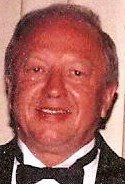By late 2003, even the Bush White House’s staunchest defenders were starting to give up on the idea that there were weapons of mass destruction in Iraq.
But WikiLeaks’ newly-released Iraq war documents reveal that for years afterward, U.S. troops continued to find chemical weapons labs, encounter insurgent specialists in toxins and uncover weapons of mass destruction.
An initial glance at the WikiLeaks war logs doesn’t reveal evidence of some massive WMD program by the Saddam Hussein regime — the Bush administration’s most (in)famous rationale for invading Iraq. But chemical weapons, especially, did not vanish from the Iraqi battlefield. Remnants of Saddam’s toxic arsenal, largely destroyed after the Gulf War, remained. Jihadists, insurgents and foreign (possibly Iranian) agitators turned to these stockpiles during the Iraq conflict — and may have brewed up their own deadly agents.
In August 2004, for instance, American forces surreptitiously purchased what they believed to be containers of liquid sulfur mustard, a toxic “blister agent” used as a chemical weapon since World War I. The troops tested the liquid, and “reported two positive results for blister.” The chemical was then “triple-sealed and transported to a secure site” outside their base.
Three months later, in northern Iraq, U.S. scouts went to look in on a “chemical weapons” complex. “One of the bunkers has been tampered with,” they write. “The integrity of the seal [around the complex] appears intact, but it seems someone is interesting in trying to get into the bunkers.”
Meanwhile, the second battle of Fallujah was raging in Anbar province. In the southeastern corner of the city, American forces came across a “house with a chemical lab … substances found are similar to ones (in lesser quantities located a previous chemical lab.” The following day, there’s a call in another part of the city for explosive experts to dispose of a “chemical cache.”
Nearly three years later, American troops were still finding WMD in the region. An armored Buffalo vehicle unearthed a cache of artillery shells “that was covered by sacks and leaves under an Iraqi Community Watch checkpoint. “The 155mm rounds are filled with an unknown liquid, and several of which are leaking a black tar-like substance.” Initial tests were inconclusive. But later, “the rounds tested positive for mustard.”
In WikiLeaks’ massive trove of nearly 392,000 Iraq war logs are hundreds of references to chemical and biological weapons. Most of those are intelligence reports or initial suspicions of WMD that don’t pan out. In July 2004, for example, U.S. forces come across a Baghdad building with gas masks, gas filters, and containers with “unknown contents” inside. Later investigation revealed those contents to be vitamins.
But even late in the war, WMDs were still being unearthed. In the summer of 2008, according to one WikiLeaked report, American troops found at least 10 rounds that tested positive for chemical agents. “These rounds were most likely left over from the [Saddam]-era regime. Based on location, these rounds may be an AQI [Al Qaeda in Iraq] cache. However, the rounds were all total disrepair and did not appear to have been moved for a long time.”
A small group — mostly of the political right — has long maintained that there was more evidence of a major and modern WMD program than the American people were led to believe. A few Congressmen and Senators gravitated to the idea, but it was largely dismissed as conspiratorial hooey.
Monday, October 25, 2010
Subscribe to:
Post Comments (Atom)

No comments:
Post a Comment